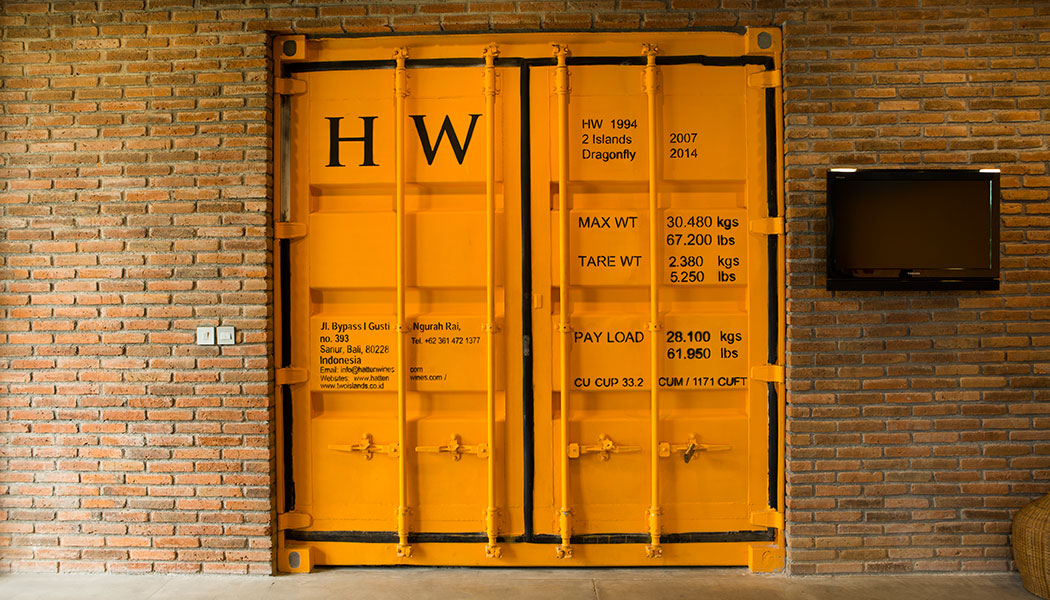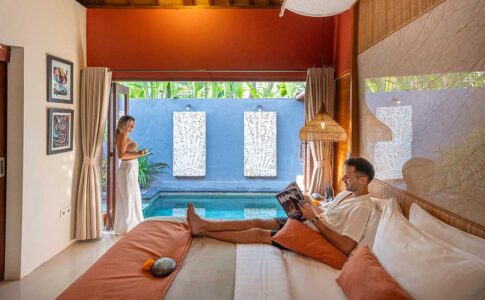When two worlds collide and time honoured European traditions take root in Indonesia, interesting things emerge. Hatten Wines is Bali’s native viticulture pioneer and major player in the Asian world. Ondy Sweeting observes the bloom of a Bali trailblazer. Images: Lucky 8.
The Asian Wine Review has awarded Hatten Wines its highest and most coveted honour of Winery of the Year 2017. This is no small achievement given the competition from eight other Asian nations, 100 wineries offering 300 wines.
This Bali born-business has come a long way from its inception in 1968 when the island could not have been more laid-back and beautiful. Stunning sandy beaches ringed island and Sanur was the go-to holiday destination for Sophia Loren and the glamour pusses of the time. Only a clutch of rarified surf adventurers and the locals knew Kuta. In 1968 President Suharto was formally elected and brought peace to the islands that had been in a disastrous state of chaos.
If ever there was a time when a person needed a drink, it was then. The Budarsa family of Sanur started making rice wine – or brem – and the iconic anise-flavoured spirit, arak. It was a move from which the family has never looked back.
“I never thought we would become this big,” said scion of path maker of Hatten Wines, Ida Bagus Rai Budarsa (Rai).

And big it has become with a strong presence in Indonesia’s tourist hot spots from Canggu to Labuan Bajo in Flores. Foreign Embassies and international trade delegations regularly dine in the bespoke private restaurant of the company’s stunning head office in Sanur.
“It is a big business and a big responsibility but there is no way to go but forward,” says Rai, who worked in the family company from when it was a single shed that was the rice wine factory, sales office, storage unit and office adjoining the family home in Sanur.
As a pioneer, Rai Budarsa came up with the brilliant idea of bringing quality grape juice from the vineyards of South Australia to create a locally made wine that became Two Islands in 2007.
“We actually started the brand for the Jakarta market because people there love to drink imported wine.
“At the time a team went to Australia and started trials in South Australia using the Balinese methods of wine making but in very small quantities and we immediately bought it.
“We sold the Two Islands brand to Jakarta and it was very successful. It grew organically and now Bali is our biggest market for the Chardonnay. We provide wine to the Bali, Lombok and Flores tourist markets and the local market in Jakarta. More and more Indonesians are drinking wine and we have a lot of people from Badung in East Java and from Jakarta coming to buy from our cellar door,” he said.

In Bali alone, Hatten and Two Islands brands can be found in 1,800 resorts, hotels and restaurants plus 125 retail outlets.
Hatten is a well-known sponsor of important cultural events including the Ubud Writers’ Festival and The Sanur Festival and it is a big player among food and wine exhibitions throughout Asia.
“We collaborate with many suppliers of fine foods. We will do lunch with food and wine pairing at our private restaurant. We brought in an expert chef in Chinese dining, which we paired with our wines and invited hotels who have Chinese guests to join us,” Rai said.
The group has a well-established education program operating out of The Wine Room where classes range from amateur wine appreciation through to wine list efficiency management, sommelier classes, plus cooking and wine pairing training.
Grapes and their processing into quaffable wine is a serious business at Hatten.
While Two Islands is made from the juice of South Australian grapes, nothing is left to chance from the farming stages.

“We are involved in quality control from the beginning with our team going to our farmers in South Australia before the harvest to ensure that the grapes are what we want,” said Rai.
“Research and development is important to us so we are constantly improving the quality of our grapes that grow at our Singaraja farms. We are not about simply maintaining the quality but rather improving it,” he said.
The brand is planning to expand into tourism and start offering wine experiences that begin in the Hatten vineyards in northern Bali and end at the dining table in the private dining room at the Sanur HQ.
The Sanur HQ is an interesting destination in its own right with its wine palette inspired architect – the interiors and furniture are largely hewn from the wood of old palettes – through to the lifestyle boutique that is full of goodies for the wine buff, and The Wine Room school. But most intriguingly is the ancient museum piece press that is a relic from the original factory shed in Sanur nearly five decades ago. What a long way they have come.
































